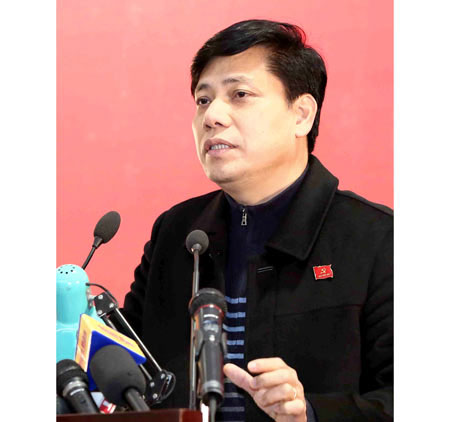VietNamNet Bridge – Vietnam needs about US$40-50 billion for traffic infrastructure development from now until 2020, said Deputy Minister of Transport Nguyen Ngoc Dong on the sideline of the 12th National Congress of the Communist Party of Vietnam.

|
|
Deputy Minister of Transport Nguyen Ngoc Dong
|
About VND87 trillion (US$4 billion) was disbursed last year so the country will have to mobilize an average of US$7 billion a year in the next five years, which Mr. Dong said a big challenge requiring implementation of many measures.
Firstly, mechanisms should be improved via the legal system to mobilize resources at the maximum because it will be very difficult for the state budget to supply enough capital for traffic development.
Policies on fees, price and risk-sharing should encourage private sector to further attend in developing the traffic infrastructure. Ministries, central and local agencies should work together to handle difficulties and problems while implementing these policies.
Previously at the 12th congress, Minister of Transport Dinh La Thang reported major targets in traffic development in the phase of 2016-2020.
Specifically new highways will be built nationwide to increase their length to 2,000 kilometers by 2020. North South Highway will be basically done including under-construction stretches Da Nang-Quang Ngai, Ben Luc-Long Thanh, La Son-Tuy Loan.
Besides work will start on new stretches including Ninh Binh-Quang Ninh, Quang Ngai-Quy Nhon, Nha Trang-Phan Thiet-Dau Giay, Trung Luong-My Thuan-Can Tho.
Investment will continue in major highways connecting with seaports and border gates including Bien Hoa-Vung Tau, Bac Giang-Dong Dang, Ha Long-Hai Phong, Van Don-Mong Cai, HCMC-Moc Bai, Dau Giay-Lien Khuong.
Roads leading to highways will be constructed to improve their exploitation efficiency. They include routes connecting Ha Giang, Tuyen Quang, Lai Chau provinces and Noi Bai-Lao Cai Highway, Phap Van-Ninh Binh Expressway and Hanoi-Hai Phong Highway, Cao Bang Province and Hanoi-Lang Son Highway.
In addition, construction will complete in Ca Mountain Pass Tunnel, Cu Mong Tunnel and the second phase of Hai Van Tunnel.
The ministry will give priority to upgrading of the existing railway system especially the North-South route to increase average speed to 80-90 kilometers an hour to passenger trains and 50-60 kilometers an hour to freight trains.
It will study measures and prepare necessary conditions for building high speed dual rail in sections with large transport demand such as Hanoi-Vinh, HCMC-Nha Trang and Lao Cai-Hanoi-Hai Phong.
These track sections will be expanded to 1,435mm gauge and allow both passenger and cargo trains to travel at permissible speed of 160-200 kilometers an hour in the first phase.
The ministry will concentrate on synchronous upgrading of international airports, building works to exploit airports more safely and effectively taking their total capacity to 100 million passengers a year, 1.5 times higher than last year.
Efforts will be made to build and open for service Long Thanh International Airport by 2023, two years sooner than the target set in the national assembly’s resolution.
Social resources will be mobilized to invest in Van Don, Lao Cai, Lai Chau and Na San airports.
| related news |
|
More private investments called for improving Vietnam’s healthcare sector |
SGGP